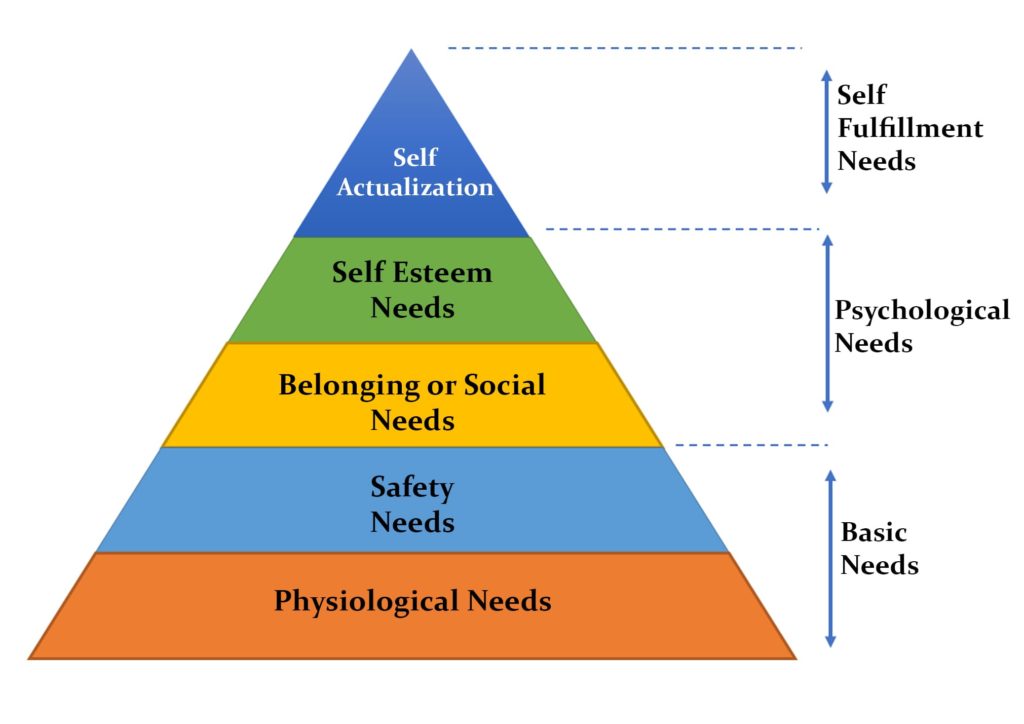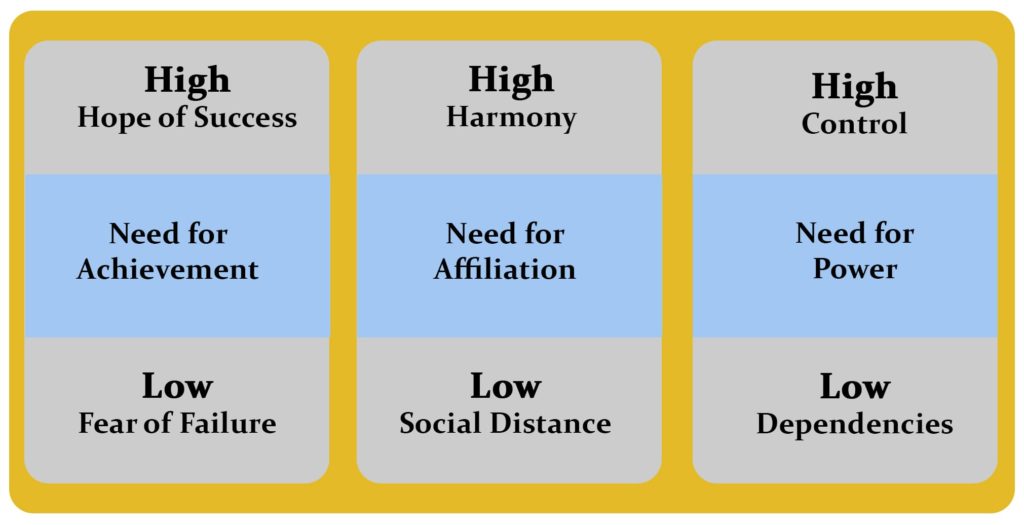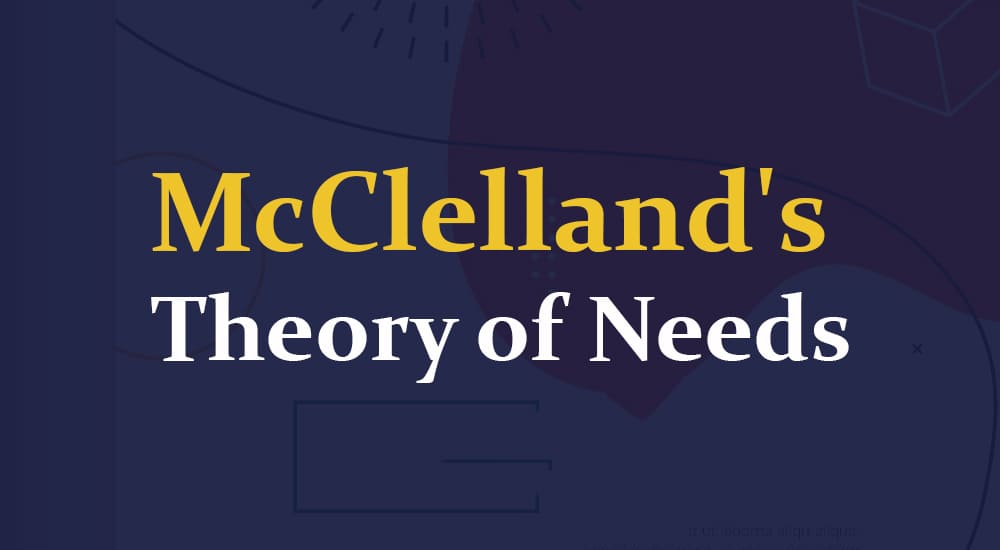McClelland’s theory of needs was developed in the 1960s by American psychologist David McClelland. He said that each human, regardless of race, age, gender, or culture, is affected by at least one of three driving motivators: achievement, power, or affiliation.
He also mentioned that an individual develops these motivators over time through life experiences and uses them to solve life problems.
What is McClelland’s Theory of Needs?
McClelland’s theory of needs states that every individual has at least one of the following driving motivators in their lives:
- The need for achievement (strong ability to complete things)
- The need for power (influence over other people)
- The need for affiliation (strong relationships)
This theory shapes a human’s overall behavior by blending one or more needs. Awareness of these needs fosters self-awareness, decision-making skills, self-management, and self-realization. This helps the individual achieve their goals faster.
Where Does McClelland’s Theory Derive From?
McClelland built his theory on Maslow’s hierarchy of needs (1943), which identified humans’ basic physiological, safety, social, self-esteem, and self-actualization needs.
Two decades later, McClelland established the motivational theory of needs in his book “The Achieving Society.” In this book, McClelland suggested that each human behavior differed according to their dominant motivator.
Maslow’s Hierarchy of Needs

American psychologist Abraham Maslow developed the hierarchy of needs covering five elements in order of importance.
#1. Physiological Needs
Physiological needs are the most basic needs and include everything essential for a human’s survival.
Things like food, water, shelter, and clothing fall under physiological needs.
#2. Safety Needs
Safety needs include the feeling of being financially, mentally, physically, and emotionally secure. The second tier in the hierarchy represents safety needs, and they are the second most important.
The needs include employment security, finances, well-being, body, resources, family, friends, and health.
#3. Belongingness or Social Needs
Belongingness or social needs are related to acceptance, love, and belonging.
Friendships, romantic relationships, social groups, religious organizations, and family are examples of social needs.
#4. Self-Esteem Needs
Self-esteem needs refer to the need for respect, appreciation, and acknowledgment. Once the physiological, safety, and social needs are satisfied, a human’s self-esteem needs to be fulfilled to remain content.
Some aspects that satisfy this hierarchy level are confidence, personal acceptance, social acknowledgment, respect, and praise.
#5. Self-actualization Needs
The top level of Maslow’s hierarchy is self-actualization needs that help a human to attain the highest level of satisfaction. It occurs after all other needs are fulfilled and is a process wherein individuals establish themselves in society.
The needs included in this level are creativity, morality, problem-solving ability, lack of prejudice, and more.
The Three Types of McClelland’s Theory of Needs

#1. Need for Achievement
The theory of need for achievement refers to personal development and achievement, which is driven by task completion and fulfillment. An individual strives to succeed and excel in achieving a specific goal in this particular need. Such individuals are highly dedicated and committed to their task completion and ensure they meet deadlines on time.
It is often challenging for a high achievement-driven individual to manage a team and delegate tasks to others as they like taking control over the job. They expect everybody in the team to be highly driven and motivated like them to complete the work.
Creativity, challenge, innovation, and invention work hand in hand with such individuals as they look for the feeling of accomplishment.
Characteristics of a Person with a High Need for Achievement (Dominant Motivator)
- They schedule everything according to the task given to succeed.
- They like feedback to improve at work.
- They set challenging goals and feel highly accomplished when the goals are met.
- They are moderate risk-takers, as some level of risk offers a sense of achievement, whereas low-risk situations do not provide any.
- They are micromanagers.
- They assume responsibility for finding a solution.
- They prefer working alone and avoid teamwork.
For example, take a person setting up their business of customized hampers, often referred to as someone with a need for achievement as a dominant motivator. They work day and night to become a successful entrepreneur by setting short-term goals, allocating marketing resources, drafting promotional content, building a social media and offline presence, etc.
Such individuals like accomplishing short-term goals that lead them toward their long-term goals. They like working alone as they can complete tasks exactly as they want to.
#2. Need for Power
The theory of need for power is the desire to have full control or authority over a person, situation, or particular task to influence decisions as per one’s professional and personal will. The main driver that boosts the need for a power motivator is when people around the person appreciate, accept and acknowledge their decisions and ideas.
Such individuals are best suited for leadership roles as they have a strong focus and are efficient managers at working towards a collective goal. They are highly disciplined and wish for everyone around them to be the same. Personal reputation and social recognition are vital for individuals with a high need for power. It helps them create a positive and goal-oriented work environment.
Characteristics of a Person with a High Need for Power (Dominant Motivator)
- They are outspoken and don’t shy away from directing people.
- They are highly assertive, practical, and demanding in nature.
- They enjoy getting involved in the work process as much as possible to influence decisions.
- They love winning arguments as it provides them with a sense of power.
- They are not fearful of competition and do their best to win
- They are status-driven.
- They always wish to be in charge.
- They are better leaders than team members.
For example, an executive in a managerial position who enjoys managing projects by themselves and their team members is referred to as someone who needs power. Such individuals lead the team to achieve organizational goals. They plan timelines, schedule meetings, set goals, mention deliverables, and designate tasks for each team member.
They are only motivated when they have significant power in hand and cannot perform to their full potential if the power is taken away.
#3. Need for Affiliation
The theory of need for affiliation is a strong urge to build and have solid social and interpersonal relationships. Such people prefer working as a team as it allows them to create friendly long-term relationships. They do not like working alone, as their sole driver of motivation is to collaborate, communicate, and deliver collectively.
Such individuals long for social acceptance between peers and need to be consoled by those they are close to during tough times. They are people pleasers, as they wish to be liked by everyone around them and become emotionally attached quickly. They don’t like rejection and are better as team workers than team leaders.
Characteristics of a Person with a High Need for Affiliation (Dominant Motivator)
- They are effective communicators.
- They prefer development-oriented tasks.
- They wish to create as many relationships as possible during a job.
- They go the extra mile to maintain a relationship.
- They are more inclined toward social building than personal or organizational building.
- They prefer collaboration and not competition.
- They are risk-averse.
- They wish to be a part of a group and don’t like being alone.
- They like being with people and perform best when in a group.
For example, an individual working in an organization who accepts a group project as a team member under a senior manager to build new organizational relationships and strengthen existing ones is referred to as someone needing affiliation.
Such individuals are motivated when they are heard in the group and can make new connections. As long as they can build strong friendships in the workplace, they will perform exceptionally well. If a task requires working alone, they might not perform well.
How to Apply McClellan’s Theory of Needs
#1. Identify the Team’s Motivational Needs
As a team leader or manager, one should examine their team members’ personal and professional behavior. This helps identify which motivator is a dominant factor for each individual. Past actions and characteristics also help determine these motivators.
Some team members like to be in charge of projects, whereas some might want to work under supervision. Some team members like building positive relationships and are always the first person to solve a conflict, whereas some only care about achieving the desired goal.
It is important to see who is driven by power, achievement, or affiliation to take the necessary actions. These actions lead to providing each team member with a particular situation that motivates them and helps them perform to the best of their potential.
#2. Determine How the Leadership Style can be Adjusted Accordingly
After identifying what motivates each team member, it is time to structure the leadership style accordingly. To keep every member engaged, content, and productive, the team leader can assign projects that cater to different sets of individuals in a personalized manner.
Measure the success of past projects with the team members and assess where the leadership strategy worked best and where it might have gone wrong. Another approach is to see what motivates the majority of the team members and assign projects accordingly.
Success plans, timelines, deliverables, feedback, and goals can be set accordingly to suit the needs of each individual as per their dominant motivators. This encourages growth on an individual level and contributes highly to an organization’s success because all employees can work in an environment that makes them happy and keeps them motivated.
#3. Approach Individuals as Per Their Needs
The last step to applying McClelland’s theory of needs for successful project management is to approach each individual as per their individual needs. Ensure that each team member is motivated enough as per their personal needs for achievement, power, or affiliation.
For example, challenging tasks can be assigned to team members with a dominant need for power. Simple projects that stimulate social relationships would better suit members who have a strong need for affiliation. Finally, a project that requires high commitment should be assigned to team members with a dominant need for achievement.
Suppose a particular need motivator is not working out for a member; in this case, the team leader can communicate with the member and help them identify their true motivator.
Conclusion
Motivation is one of the most important contributors to a successful project, task, or job completion. The best way to become productive is to always be motivated. McClelland’s theory of needs helps individuals identify what truly motivates them, which in turn results in a higher rate of job success and personal gratification.
